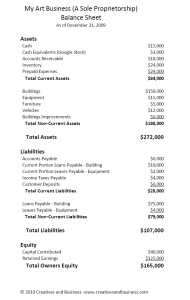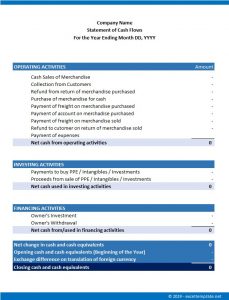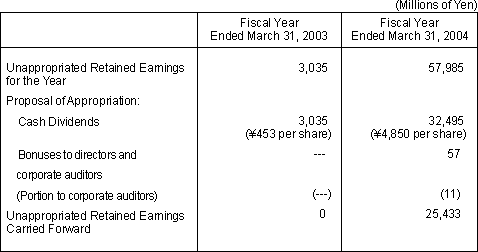
Over the past two decades, artificial intelligence (AI) has experienced rapid development and is being used in a wide range of sectors and activities, including finance. In the meantime, a growing and heterogeneous strand of literature has explored the use of AI in finance. The aim of this study is to provide a comprehensive overview of the existing research on this topic and to identify which research directions need further investigation. Accordingly, using the tools of bibliometric analysis and content analysis, we examined https://www.kelleysbookkeeping.com/ a large number of articles published between 1992 and March 2021. Future research should seek to address the partially unanswered research questions and improve our understanding of the impact of recent disruptive technological developments on finance. Despite its recent advent, Artificial Intelligence has revolutionised the entire financial system, thanks to advanced computer science and Big Data Analytics and the increasing outflow of data generated by consumers, investors, business, and governments’ activities.
The future of your industry starts here.
By incorporating copilots into their workflow, wealth managers can significantly enhance their productivity and deliver more valuable insights. These copilots use fine-tuned base models with even greater access to proprietary data than customer-facing chatbots since copilots are meant for authorized employees. This means the copilots are even more powerful, providing a productivity boost for wealth managers while increasing customer satisfaction as investors get personalized advice more quickly. Through automated portfolio building, robo-advisors automate the traditional process of working with an advisor to outline investing goals, time horizons, and risk tolerances in order to create a portfolio that meets the needs of the investor. Automated portfolios guide the user through a questionnaire that then scores to a model portfolio that meets the criteria of the investor. In addition to the questionnaire and the scoring of models, artificial intelligence is also used by these platforms in order to determine the optimal mix of individual stocks for the portfolio, which is often accomplished using modern portfolio theory.
Customer-facing process automation
Socure is used by institutions like Capital One, Chime and Wells Fargo, according to its website. Let’s take a look at the areas where artificial intelligence in finance is gaining momentum and highlight the companies that are leading the way. Our award-winning software automates photo editing with the power of AI yet leaves all the creative control in the hands of the artist.Join us on our mission to make photo editing enjoyable, easy, and accessible to anyone. You’ll be developing products with innovative technologies, providing value and inspiration for customers, and getting inspired in return.
McDonald’s Ditches AI Drive-Thru Voice Technology. What Could This Mean for SoundHound AI Stock?
Indeed, AI could add $170 billion to the profit pool for the banking sector globally by 2028. In the short term, generative AI will allow for further automation of financial analysis and reporting, enhancement of risk mitigation efforts, and optimization of financial operations. With its ability to process vast amounts of data and quickly produce novel content, generative AI holds a promise for progressive disruptions we cannot yet anticipate. CFOs and Finance all you need to know about zero depreciation auto insurance leaders can play a pivotal role in driving strategic collaboration among key C-suite leaders to enable greater success—and return on investment—of AI deployment and adoption. The journey should begin with a sound strategy and a few use cases to test and learn with well-governed and accessible data. AI has been a game-changer for financial analysts and wealth managers, completely altering the scale at which information can be gathered and analyzed.
Step 5: Start Managing Your Portfolio

In this guide, we will identify several opportunities to apply AI in finance and how to get started so you can stay ahead of the competition. The finance department has taken the lead in leveraging machine learning and artificial intelligence to deliver real-time insights, inform decision-making, and drive efficiency across the enterprise. This is why finance will be one of the first areas to see the impact of these technologies on day-to-day activities—in everything from automating payments to calculating risk—with detailed analytics that automatically audit processes and alert teams to exceptions.
For a preview, look to the finance industry which has been incorporating data and algorithms for a long time, and which is always a canary in the coal mine for new technology. The experience of finance suggests that AI will transform some industries (sometimes very quickly) and that it will especially benefit larger players. High volume, mundane processes, such as invoice entry, can lead to fatigue, burnout, and error in humans. The end result is better data to work with and more time for the finance team to focus on putting that data to use.
- Picture this—with an increasing customer base, there are large volumes of customer queries and requests.
- AI has given the world of banking and finance new ways to meet the customer demands of smarter, safer and more convenient ways to access, spend, save and invest money.
- Get stock recommendations, portfolio guidance, and more from The Motley Fool’s premium services.
- After that, focussing on a sub-sample of papers, we conduct a preliminary assessment of the selected studies through a content analysis and detect the main AI applications in Finance.
Modern neural networks, such as LSTM and NARX (nonlinear autoregressive exogenous network), also qualify as valid alternatives (Bucci 2020). Another promising class of neural networks is the higher-order neural network (HONN) used to forecast the 21-day-ahead realised volatility of FTSE100 futures. Thanks to its ability to capture higher-order correlations within the dataset, HONN shows remarkable performance in terms of statistical accuracy and trading efficiency over multi-layer perceptron (MLP) and the recurrent neural network (RNN) (Sermpinis et al. 2013). The stream “AI and the Stock Market” comprises two sub-streams, namely algorithmic trading and stock market, and AI and stock price prediction. The first sub-stream deals with the impact of algorithmic trading (AT) on financial markets. In this regard, Herdershott et al. (2011) argue that AT increases market liquidity by reducing spreads, adverse selection, and trade-related price discovery.
Trumid also uses its proprietary Fair Value Model Price, FVMP, to deliver real-time pricing intelligence on over 20,000 USD-denominated corporate bonds. This AI-powered prediction engine is designed to quickly analyze and adapt to changing market conditions and help deliver data-driven https://www.business-accounting.net/how-to-write-a-grant-proposal-for-a-small-business/ trading decisions. Many financial institutions are incorporating AI into their portfolio valuation processes to address these challenges. Financial institutions can enhance accuracy, efficiency, and decision-making with ai-powered asset valuation that is automated and accurate.

This article on trading psychology discusses why dealing with your emotions is important for traders and investors alike. Robo-advisors like Wealthfront and Betterment automate the traditional process of working with an advisor to outline investing goals, time horizons, and risk tolerances in order to create a portfolio that meets the needs of the investor. In addition to the questionnaire and the scoring of models, these platforms also use artificial intelligence to determine the optimal mix of individual stocks for the portfolio. This research stream focuses on algorithmic trading (AT) and stock price prediction. Machine learning and ANNs significantly outperform statistical approaches, although they lack transparency (Le and Viviani 2018). To overcome this limitation, Durango‐Gutiérrez et al. (2021) combine traditional methods (i.e. logistic regression) with AI (i.e. Multiple layer perceptron -MLP), thus gaining valuable insights on explanatory variables.

When the technology was first rolled out, McDonald’s said it was about 85% accurate and that it could take 80% of orders. However, with social media, some of the tech’s larger screw-ups became viral, such as it adding ketchup packets and butter to a sundae and water order. And since Finance draws upon enormous amounts of data, it’s a natural fit to take advantage of generative AI. The first step is the same for every investor, which is to understand your financial goals so you can move forward with an investment strategy that fits your needs. Using AI to unlock the potential in the finance sector offers limitless possibilities. It’s a journey that financial chiefs need to consider and open the door to more innovations.
As such, any investments in this growth tech stock should be sized accordingly, given the risk. Let’s look closer at McDonald’s decision and what impact it could have on SoundHound AI (SOUN -0.98%), whose voice-powered AI technology has been making a lot of inroads in the restaurant space lately. For all its tantalizing potential to automate and augment processes, generative AI will still require human talent. Generative AI might start by producing concise and coherent summaries of text (e.g., meeting minutes), converting existing content to new modes (e.g., text to visual charts), or generating impact analyses from, say, new regulations. Producing novel content represents a definitive shift in the capabilities of AI, moving it from an enabler of our work to a potential co-pilot. While many investment firms rely on fully or partially automated investment strategies, the best results are still achieved by keeping humans in the loop and combining AI insights with human analysts’ reasoning capabilities.
Those making their own investment decisions should determine their investing strategy to understand the types of stocks they want in their portfolio. Investors could also utilize suggested models from robo-advisors, often available for free, to help determine the mix of asset classes for their portfolio. With AI poised to handle most manual accounting tasks, the development and proficiency of higher-level skills will be imperative to success for the next generation of finance leaders. Finance professionals will still need to be proficient in the fundamentals of finance and accounting to oversee the algorithms and be able to spot anomalies. However, their day-to-day work will increasingly focus less on crunching the numbers and more on data interpretation, business analysis, and communication with key stakeholders.
They may also want to consider further refining their stock screen searches and learning how they can use the efficient frontier to craft a portfolio built for both favorable returns for the lowest level of risk possible. It enables investors to identify a portfolio that fits their specific needs relative to risk tolerance and time horizon. Further, once a portfolio has been selected, AI can be used in conjunction with modern portfolio theory to craft a portfolio of stocks that falls on the efficient frontier, which increases returns relative to risk.






